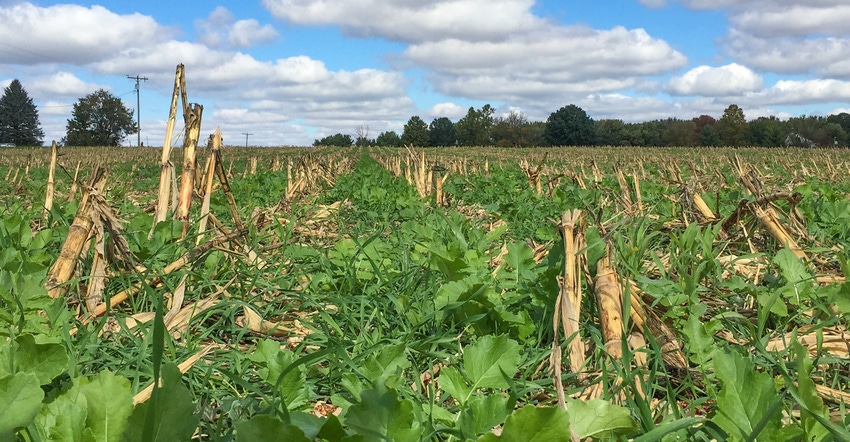April 10, 2019

By Don Donovan
Across America, April springs hope eternal for baseball fans. The crack of the bat and pop of the ball into a mitt fills the air as the boys of summer return. For farmers, it’s the start of another season full of hope for good yields and better prices.
How does soil health compare to baseball? Let’s take a closer look.
Vertical tillage is a bunt, where no runs score but the runner moves to the next base. Vertical tillage can lead to something better. It can move you to the next step of your soil health journey.
A single gets you to first base. It equals those conservation practices that address problems but really don’t correct them. They’re band-aids, such as a grassed waterway. The gully is repaired and looks better, but the real problem is soil erosion from too much runoff and not enough infiltration.
A double takes you to second base, halfway home. Not bad, but still a long way to go. This is strip till, which is much better than some systems, but still uses lots of horsepower and requires multiple trips. Sometimes it may lead to erosion down the strips.
A triple is third base, almost home. Third base is a no-till system — past halfway, but you still haven’t scored a run. There are still more things you can do to improve your soil.
Cross home plate
The home run allows the runner to start at home plate and end at home plate. A run scores even if there are no other runners on base. In soil health, a home run is no-till in conjunction with cover crops. You score even if you do nothing else. Soil improves, you reduce erosion, and water quality is better.
The rarest hit is the grand slam. Four runs score with one hit, the most bang for the buck. Soil health-wise, this is a full regenerative agriculture system using the principles of soil health. The soil is always covered, with a living root existing as much of the year as possible. You have diversity in cash and cover crops, and a never-till system protecting the soil. This system, along with integrating grazing livestock, will build a resilient soil that will buffer changes in the environment, virtually eliminate erosion, improve water quality, reduce need for commercial inputs, sequester carbon and improve profit margins.
A baseball season is long: 162 regular season games, plus the playoffs and World Series. If you finish early, your team anxiously awaits early March to get ready for the next season.
The soil health journey is long, filled with trial and error and some steps backward, but mostly moving forward, building a new soil. You want a soil rich in organic matter and carbon that not only infiltrates water better, but also stores it for dry periods.
The goal is a soil that cycles nutrients better, allowing you to reduce inputs over time and improve profit margins while maintaining or improving yields.
In baseball you can’t hit a grand slam unless you walk to the plate. Start your soil health journey today by stopping by your local soil and water conservation district or Natural Resources Conservation Service office to get more information.
Donovan is a district conservationist with the NRCS. He writes on behalf of the Indiana Conservation Partnership.
You May Also Like




